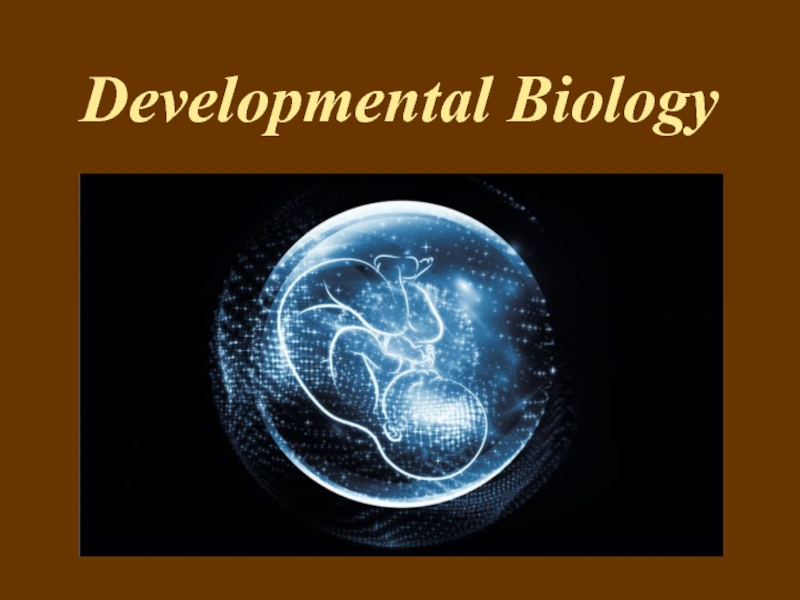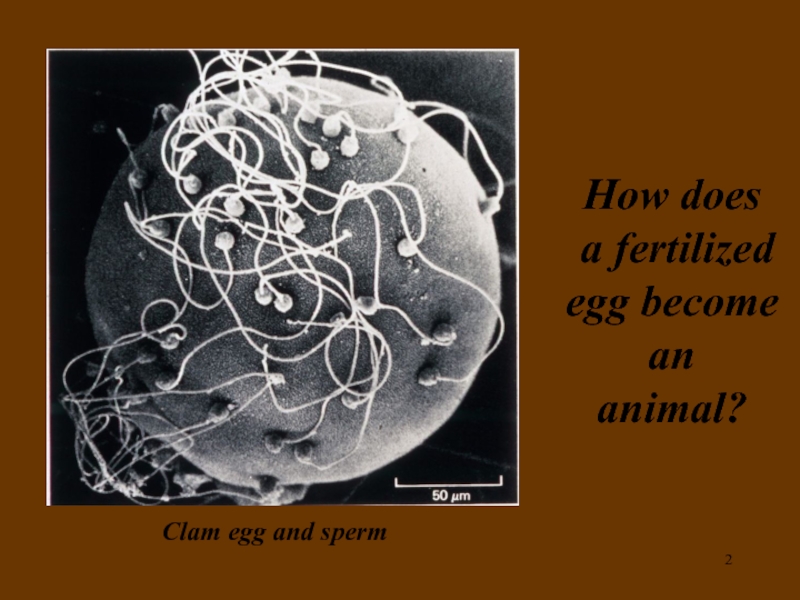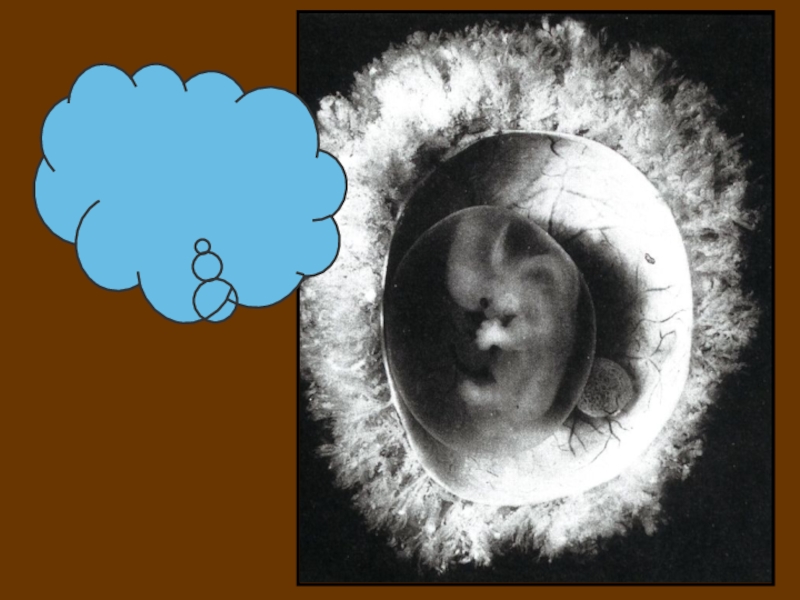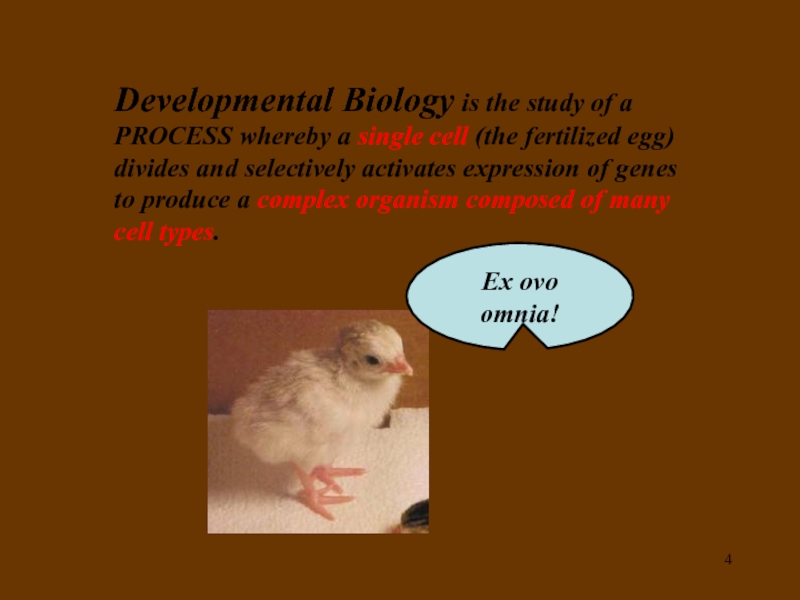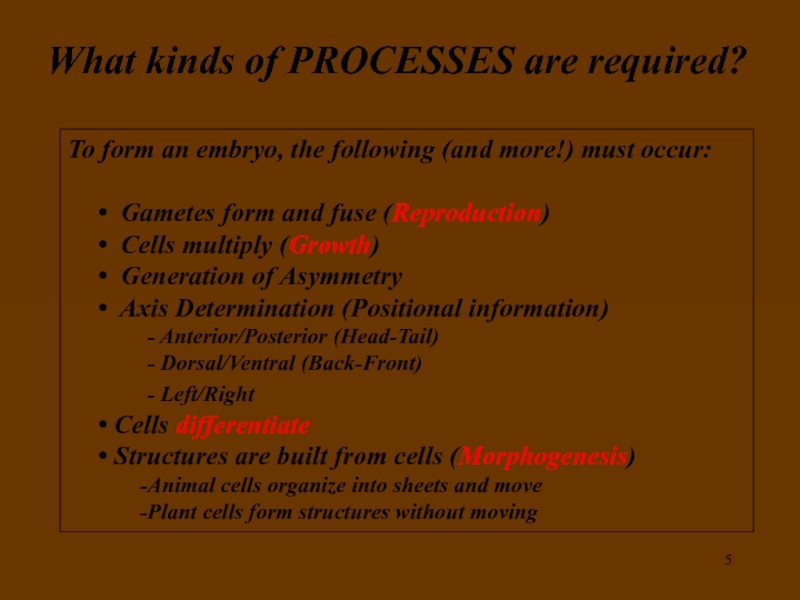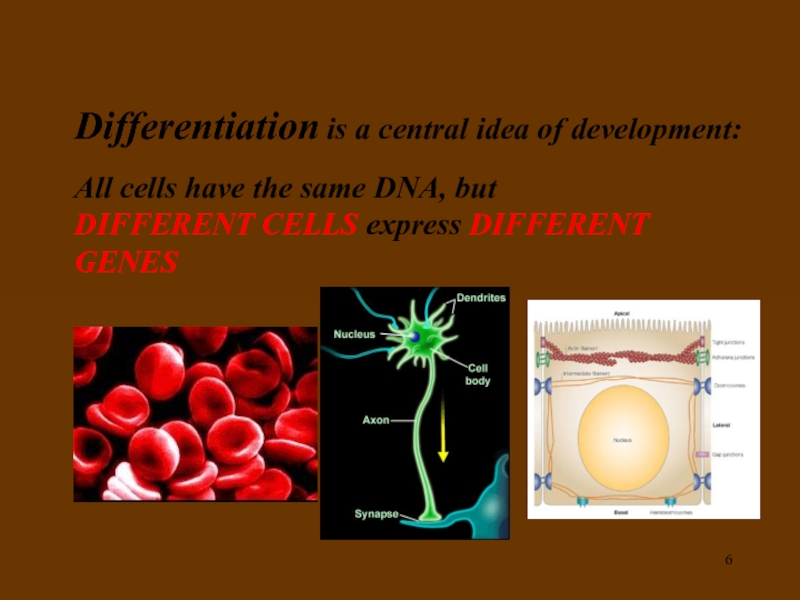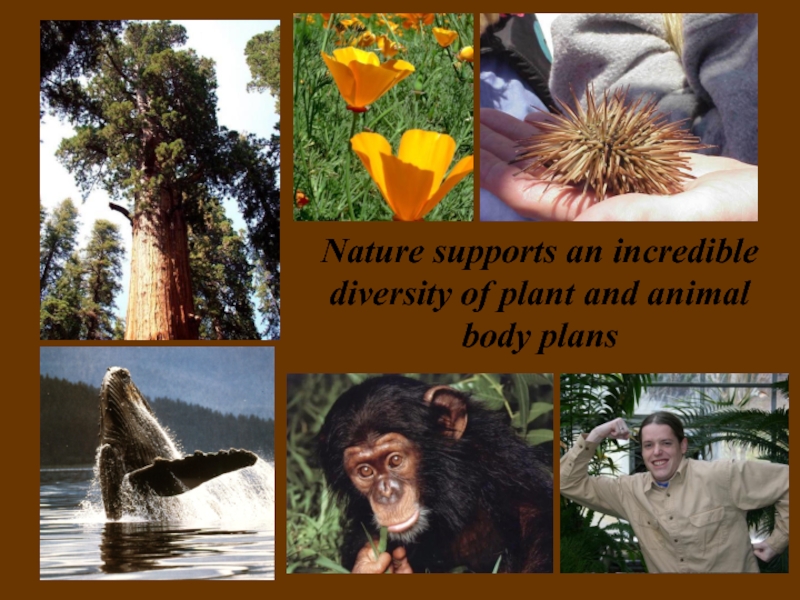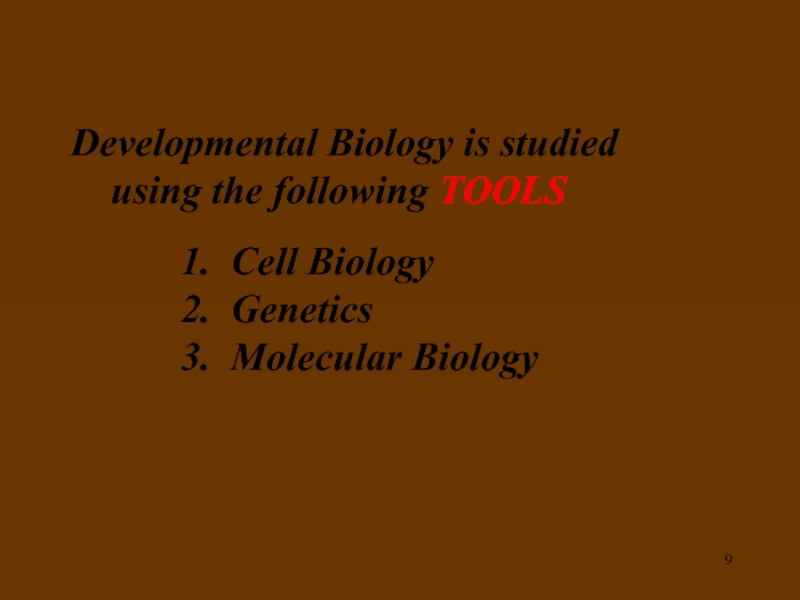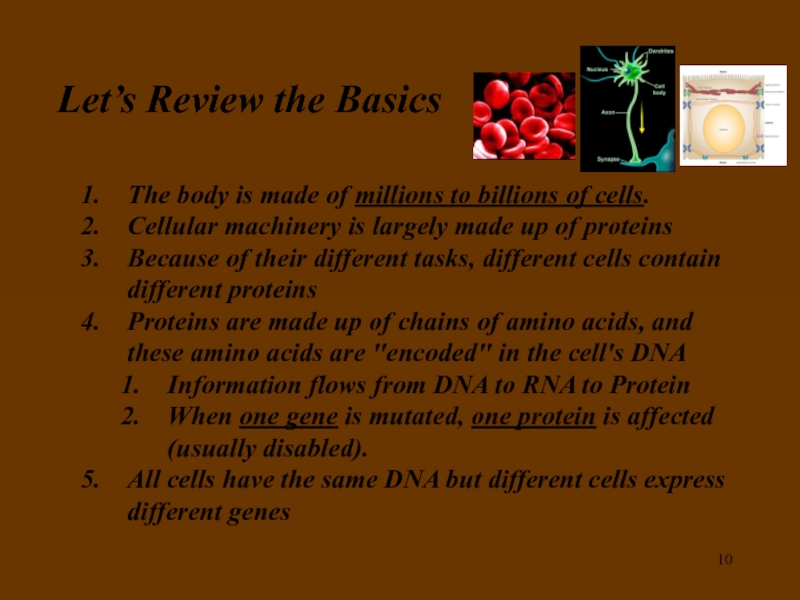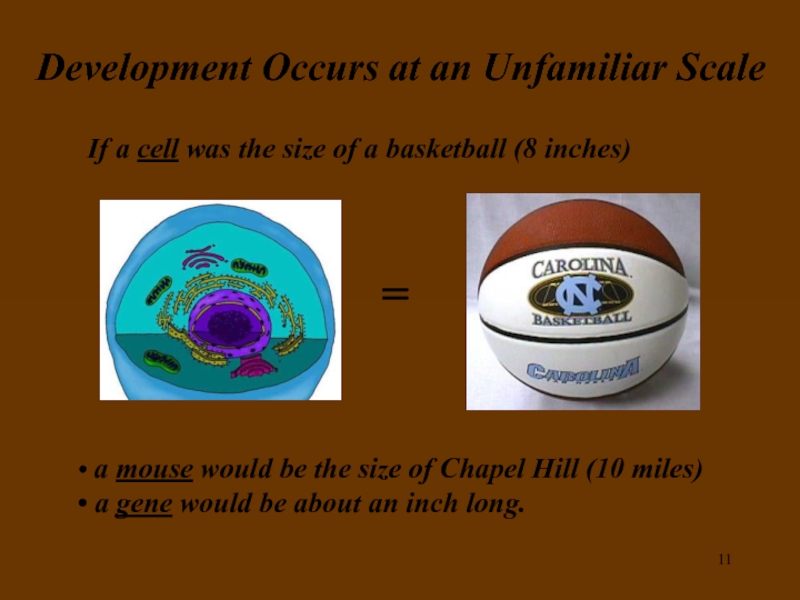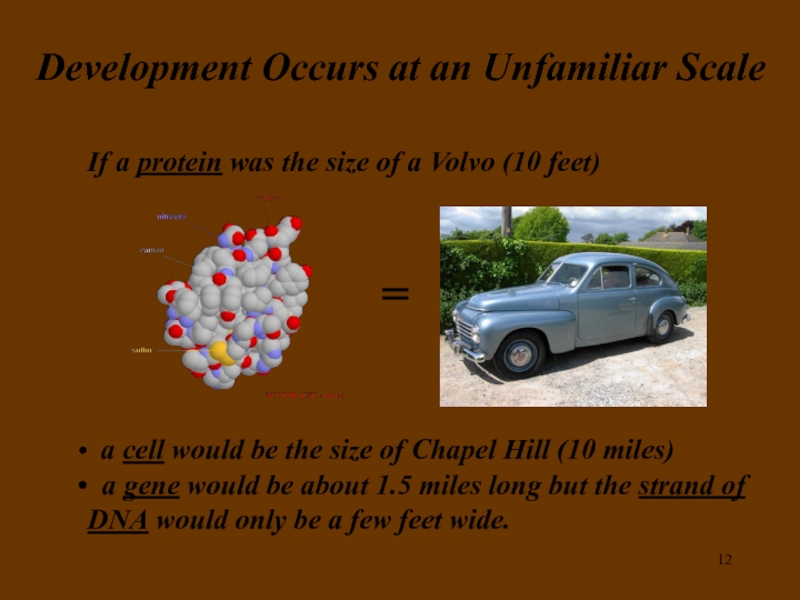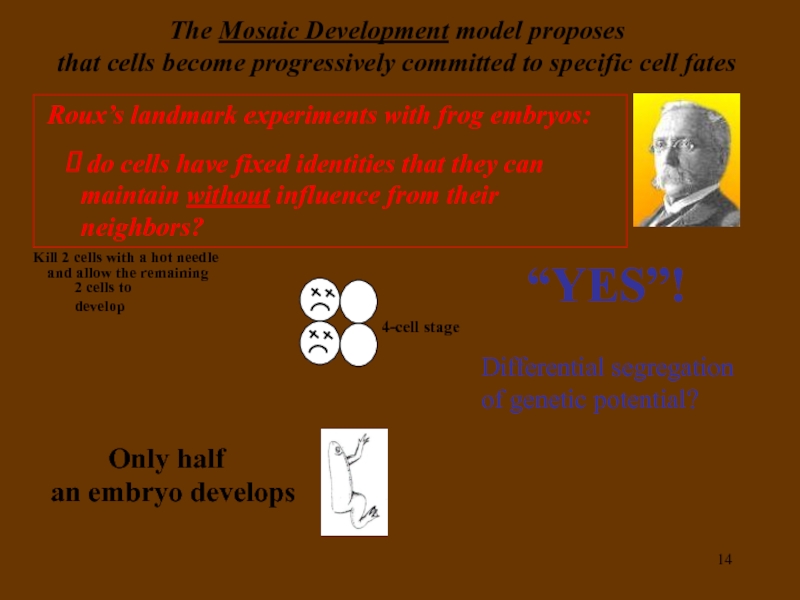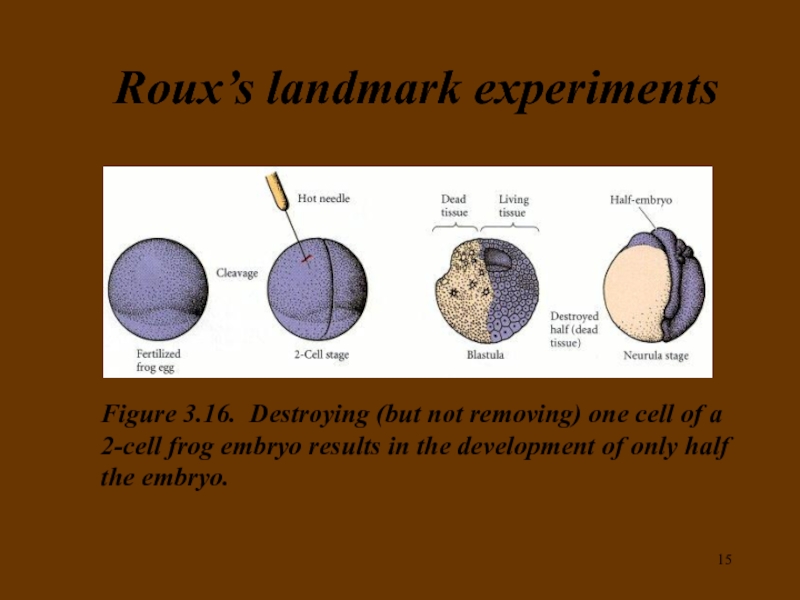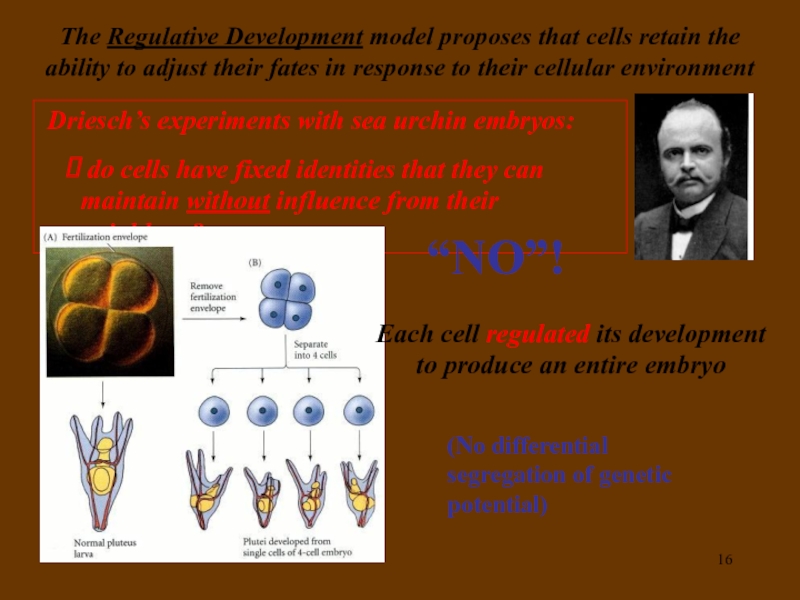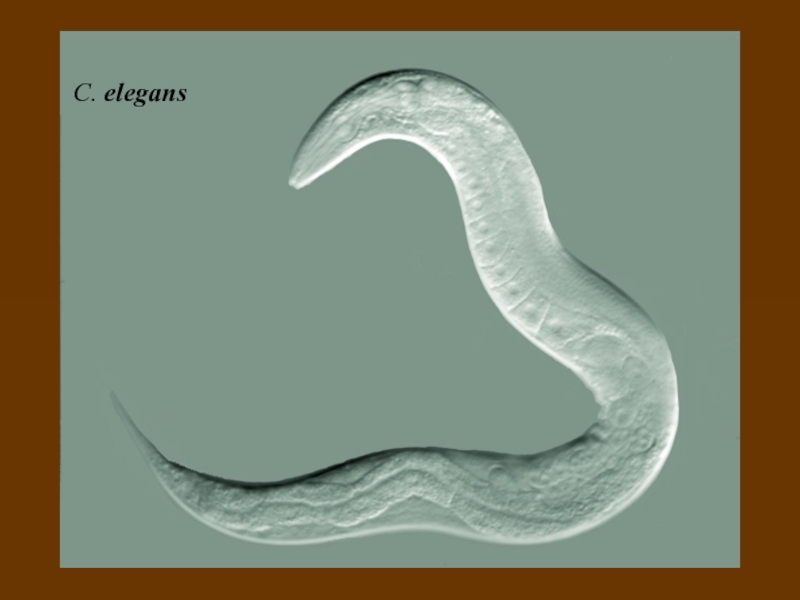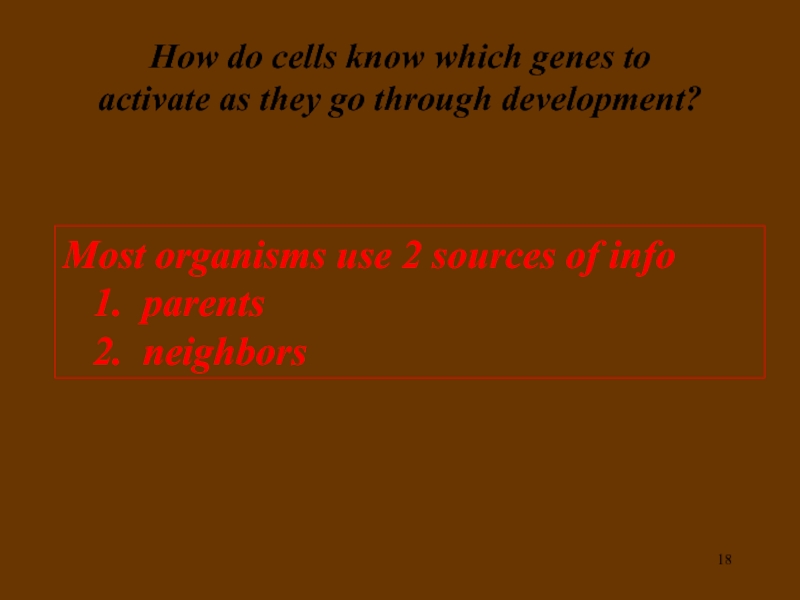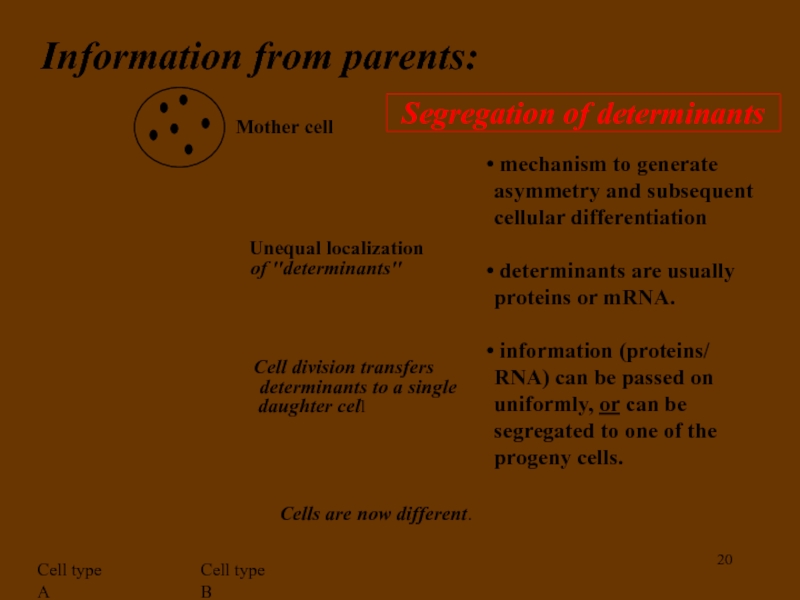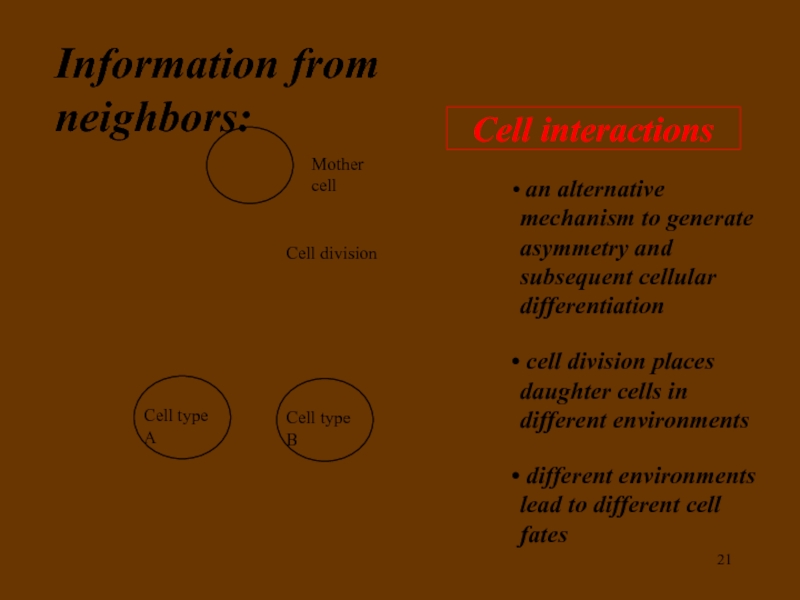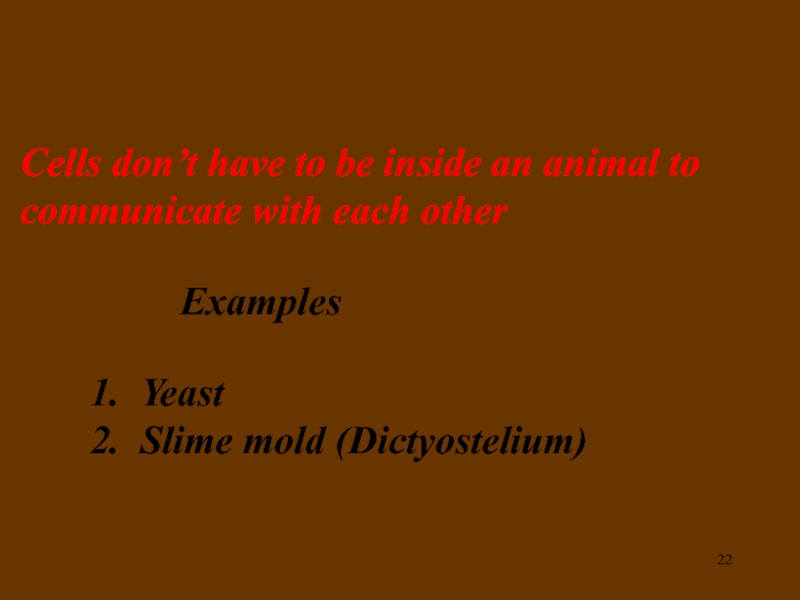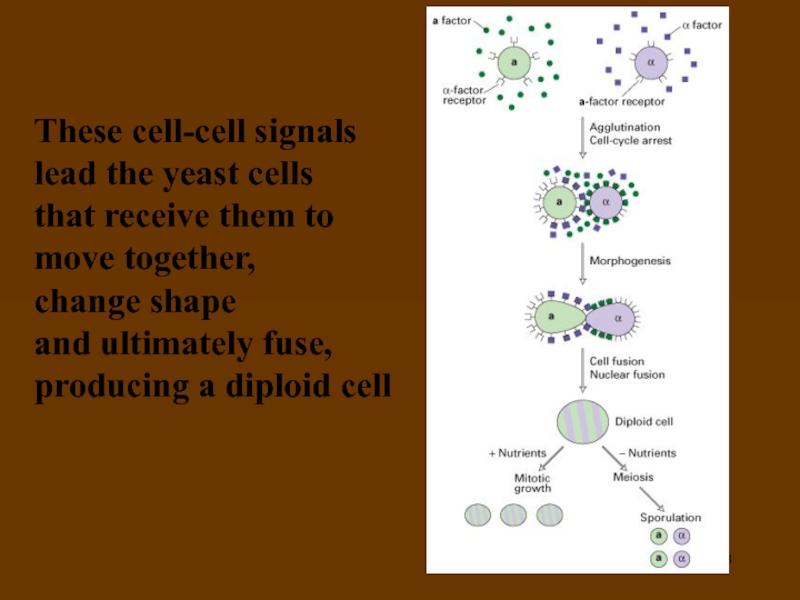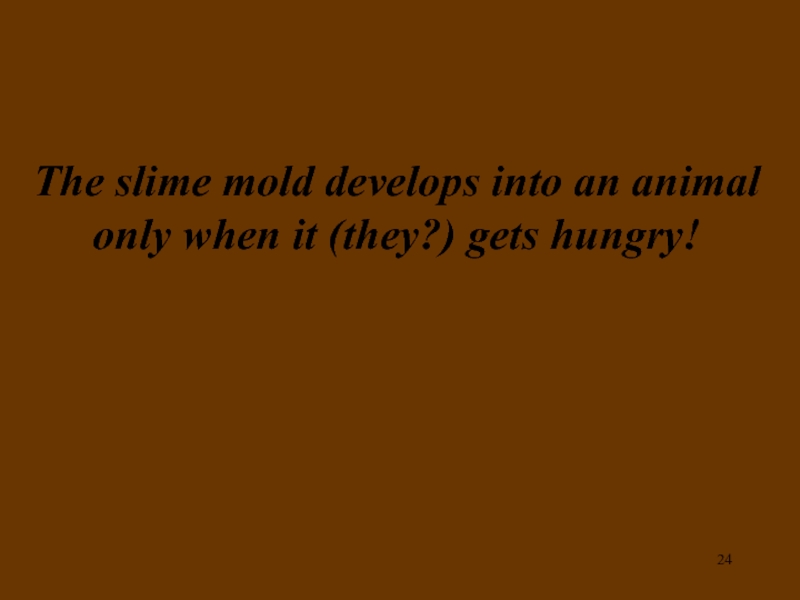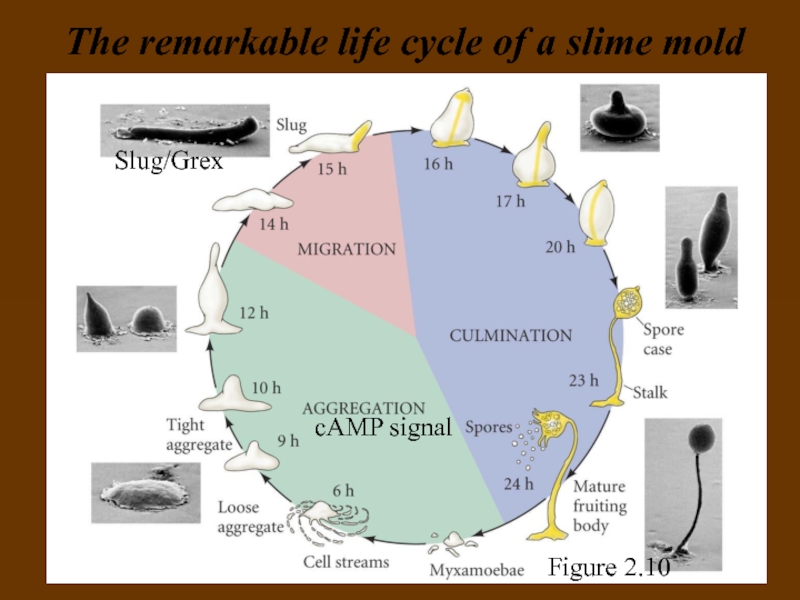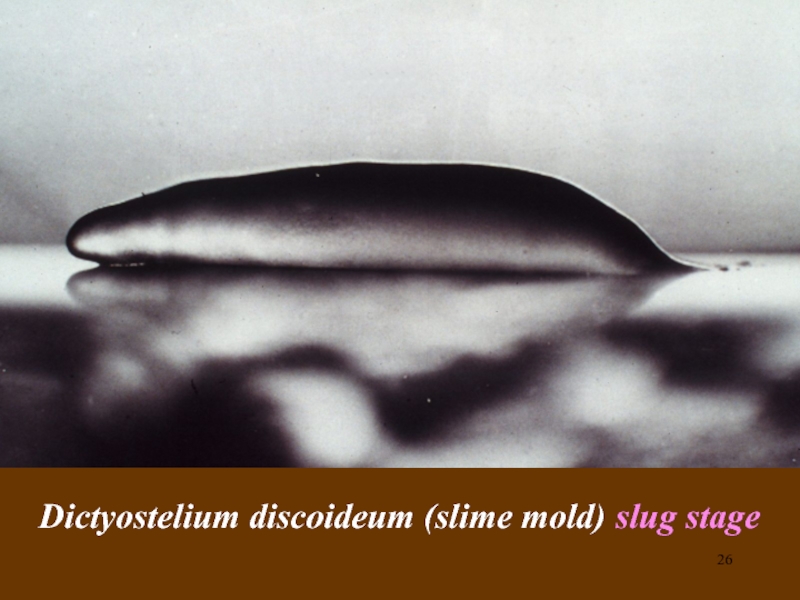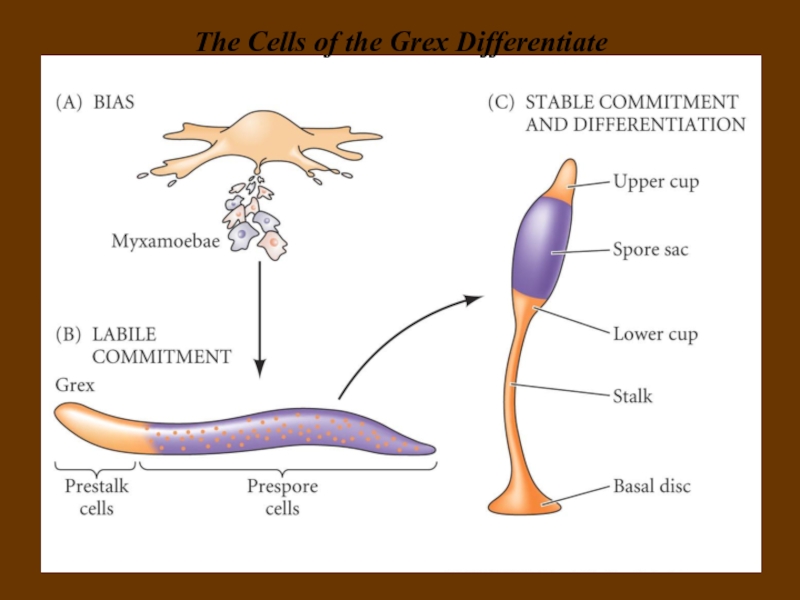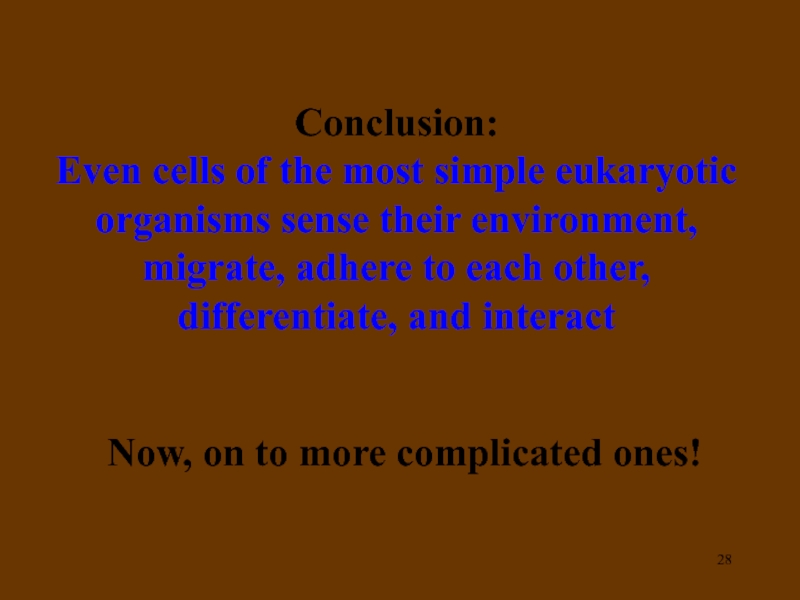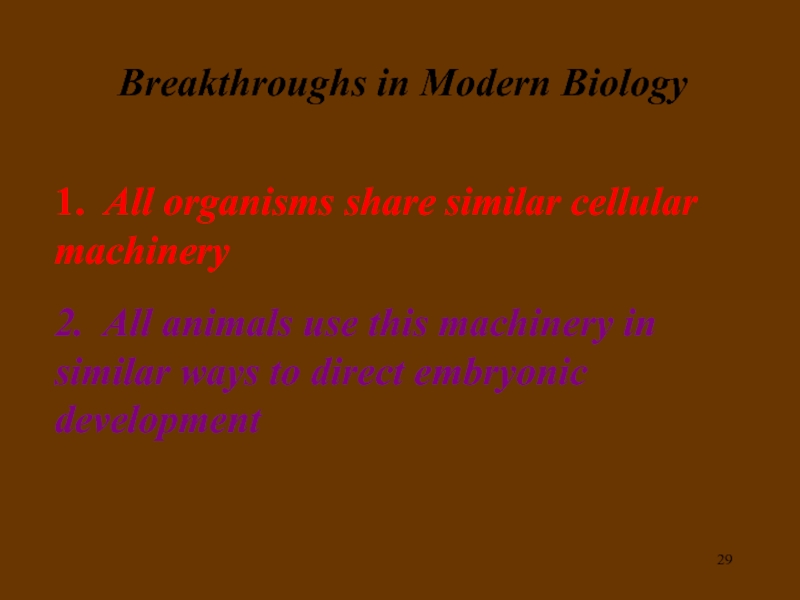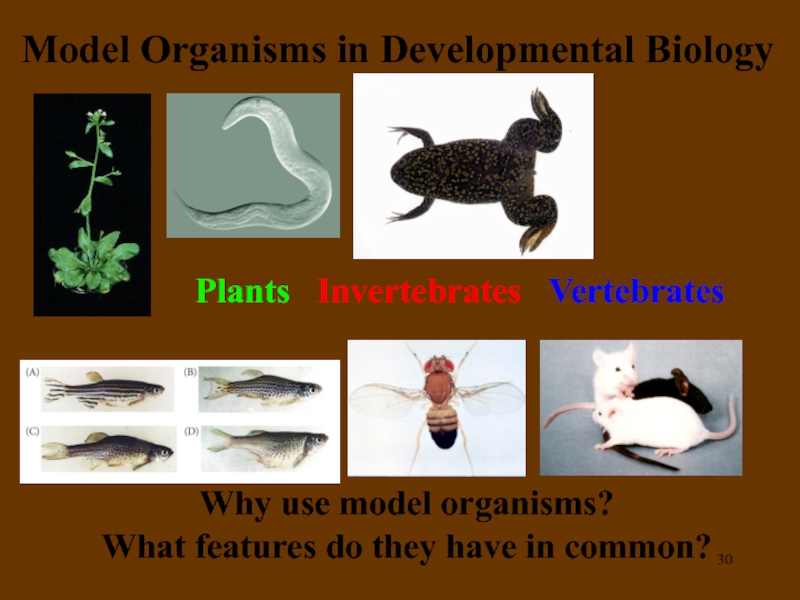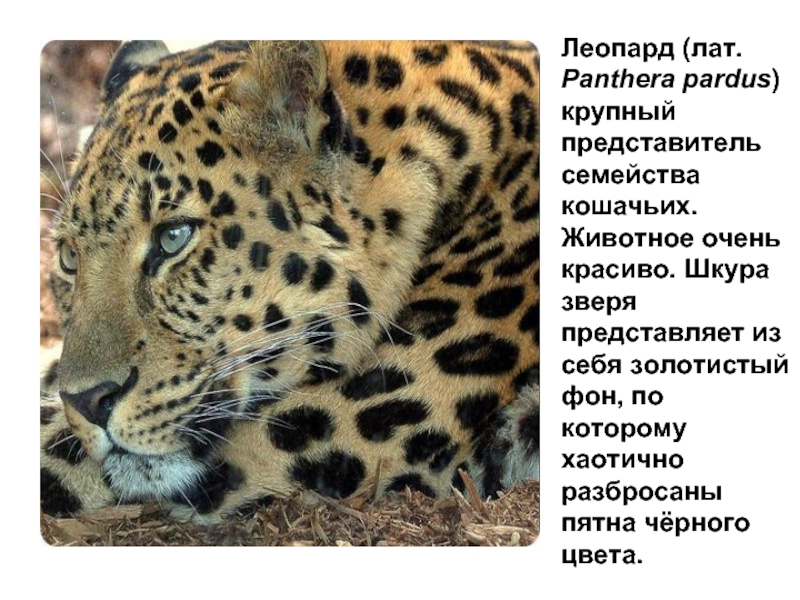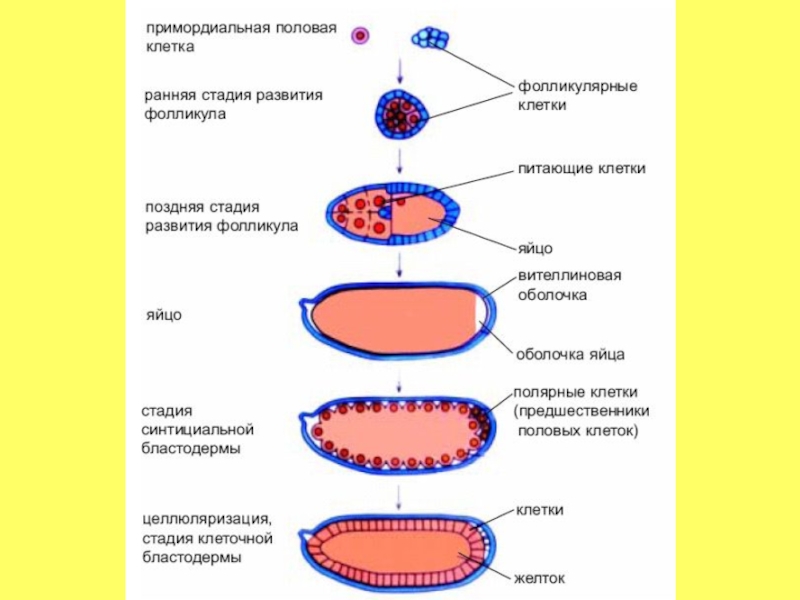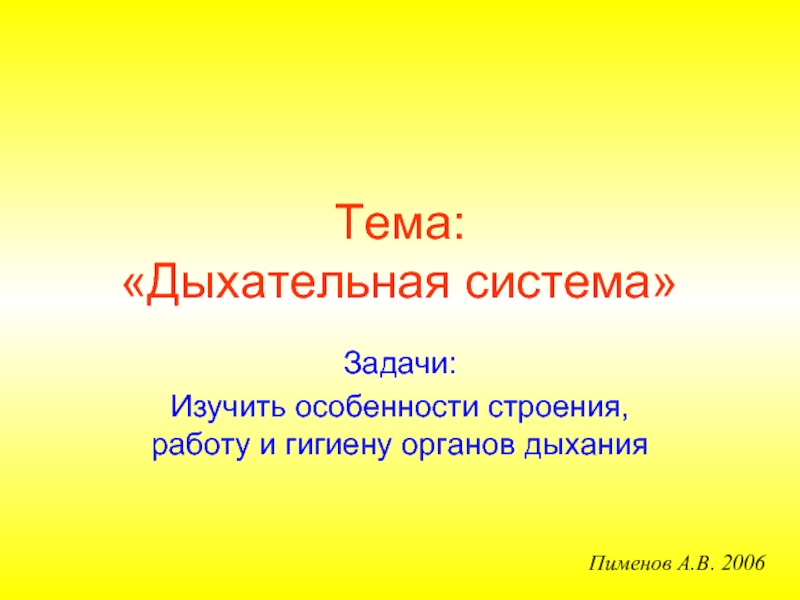- Главная
- Разное
- Дизайн
- Бизнес и предпринимательство
- Аналитика
- Образование
- Развлечения
- Красота и здоровье
- Финансы
- Государство
- Путешествия
- Спорт
- Недвижимость
- Армия
- Графика
- Культурология
- Еда и кулинария
- Лингвистика
- Английский язык
- Астрономия
- Алгебра
- Биология
- География
- Детские презентации
- Информатика
- История
- Литература
- Маркетинг
- Математика
- Медицина
- Менеджмент
- Музыка
- МХК
- Немецкий язык
- ОБЖ
- Обществознание
- Окружающий мир
- Педагогика
- Русский язык
- Технология
- Физика
- Философия
- Химия
- Шаблоны, картинки для презентаций
- Экология
- Экономика
- Юриспруденция
Developmental Biology презентация
Содержание
- 1. Developmental Biology
- 2. How does a fertilized egg become an animal? Clam egg and sperm
- 4. Developmental Biology is the study of a
- 5. To form an embryo, the following (and
- 6. Differentiation is a central idea of development:
- 7. Nature supports an incredible diversity of plant and animal body plans
- 8. Yet all of these organisms share conserved
- 9. Developmental Biology is studied using the following TOOLS Cell Biology Genetics Molecular Biology
- 10. Let’s Review the Basics The body is
- 11. Development Occurs at an Unfamiliar Scale If
- 12. Development Occurs at an Unfamiliar Scale If
- 13. Two Extreme Models for Differentiation from the
- 14. Roux’s landmark experiments with frog embryos:
- 15. Roux’s landmark experiments Figure 3.16. Destroying (but
- 16. Driesch’s experiments with sea urchin embryos:
- 17. C. elegans
- 18. How do cells know which genes to
- 19. Information from parents: The Cell lineage
- 20. Mother cell
- 21. Mother cell Cell interactions
- 22. Cells don’t have to be inside an
- 23. These cell-cell signals lead the yeast cells
- 24. The slime mold develops into an animal only when it (they?) gets hungry!
- 25. The remarkable life cycle of a slime mold cAMP signal Slug/Grex Figure 2.10
- 26. Dictyostelium discoideum (slime mold) slug stage
- 27. The Cells of the Grex Differentiate
- 28. Conclusion: Even cells of the
- 29. Breakthroughs in Modern Biology 1. All organisms
- 30. Model Organisms in Developmental Biology
Слайд 4Developmental Biology is the study of a PROCESS whereby a single
Ex ovo omnia!
Слайд 5To form an embryo, the following (and more!) must occur:
Gametes
Cells multiply (Growth)
Generation of Asymmetry
Axis Determination (Positional information)
- Anterior/Posterior (Head-Tail)
- Dorsal/Ventral (Back-Front)
- Left/Right
Cells differentiate
Structures are built from cells (Morphogenesis)
Animal cells organize into sheets and move
Plant cells form structures without moving
What kinds of PROCESSES are required?
Слайд 6Differentiation is a central idea of development:
All cells have the same
DIFFERENT CELLS express DIFFERENT GENES
Слайд 8Yet all of these organisms share conserved developmental mechanisms that are
Our challenge is to understand both this diversity and this unity.
Слайд 9Developmental Biology is studied using the following TOOLS
Cell Biology
Genetics
Molecular Biology
Слайд 10Let’s Review the Basics
The body is made of millions to billions
Cellular machinery is largely made up of proteins
Because of their different tasks, different cells contain different proteins
Proteins are made up of chains of amino acids, and these amino acids are "encoded" in the cell's DNA
Information flows from DNA to RNA to Protein
When one gene is mutated, one protein is affected (usually disabled).
All cells have the same DNA but different cells express different genes
Слайд 11Development Occurs at an Unfamiliar Scale
If a cell was the size
a mouse would be the size of Chapel Hill (10 miles)
a gene would be about an inch long.
=
Слайд 12Development Occurs at an Unfamiliar Scale
If a protein was the size
a cell would be the size of Chapel Hill (10 miles)
a gene would be about 1.5 miles long but the strand of DNA would only be a few feet wide.
=
Слайд 13Two Extreme Models for Differentiation
from the late 1800’s (neither is correct)
Mosaic
Regulative development
Слайд 14 Roux’s landmark experiments with frog embryos:
do cells have
The Mosaic Development model proposes
that cells become progressively committed to specific cell fates
Only half
an embryo develops
“YES”!
Differential segregation of genetic potential?
4-cell stage
Kill 2 cells with a hot needle
and allow the remaining
2 cells to develop
Слайд 15Roux’s landmark experiments
Figure 3.16. Destroying (but not removing) one cell of
Слайд 16 Driesch’s experiments with sea urchin embryos:
do cells have
The Regulative Development model proposes that cells retain the ability to adjust their fates in response to their cellular environment
(No differential segregation of genetic potential)
“NO”!
Each cell regulated its development
to produce an entire embryo
Слайд 18How do cells know which genes to
activate as they go
Most organisms use 2 sources of info
parents
neighbors
Слайд 19
Information from parents:
The Cell lineage
But what makes “red” different from “blue”
Mother cell
Слайд 20
Mother cell
Unequal localization
of "determinants"
Cell division transfers
determinants to a single
daughter cell
Cells are now different.
Segregation of determinants
Cell type A
Cell type B
mechanism to generate asymmetry and subsequent cellular differentiation
determinants are usually proteins or mRNA.
information (proteins/
RNA) can be passed on uniformly, or can be segregated to one of the progeny cells.
Information from parents:
Слайд 21
Mother cell
Cell interactions
Cell type A
an alternative mechanism to generate
cell division places daughter cells in different environments
different environments lead to different cell fates
Cell type B
Cell division
Information from neighbors:
Слайд 22Cells don’t have to be inside an animal to
communicate with
Examples
Yeast
Slime mold (Dictyostelium)
Слайд 23These cell-cell signals
lead the yeast cells
that receive them to
move together,
change shape
and ultimately fuse,
producing a diploid cell
Слайд 28
Conclusion:
Even cells of the most simple eukaryotic organisms sense their
Now, on to more complicated ones!
Слайд 29Breakthroughs in Modern Biology
1. All organisms share similar cellular machinery
2. All
Слайд 30Model Organisms in Developmental Biology
Plants Invertebrates Vertebrates
Why use model organisms?
What features do they have in common?
